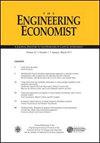基于随机优势的指数跟踪投资组合建模
IF 1.2
4区 经济学
Q4 BUSINESS
引用次数: 0
摘要
摘要提出了一种利用随机优势(SD)方法进行股票滤波的三步法,以确定投资组合中候选股票的数量和数量。实证证明,该模型可以有效地构建部分跟踪投资组合并复制指数的收益。首先,在使用SD作为风险规避者的投资组合中发现了低标准差特征。其次,我们的模型为投资组合生成成分,填补了指数跟踪策略的空白。第三,从基于sd的模型中选择的投资组合的回报率优于富时指数和传统指数追踪器。权重成分的人工智能算法可以在未来的研究中进行检验。本文章由计算机程序翻译,如有差异,请以英文原文为准。
Modeling index tracking portfolio based on stochastic dominance for stock selection
Abstract We propose a three-step method using the stochastic dominance (SD) approach on stock filtering to determine the number and candidate stocks in a portfolio. We empirically prove that our model can be used to efficiently construct a partial tracking portfolio and replicate the return of the index. First, the low standard deviation feature is found in the proposed portfolio using SD for the risk avoider. Second, our model generates constituents for a portfolio and fills the gap in the index tracking strategy. Third, the portfolios chosen from the SD-based model outperform the FTSE index and traditional index trackers’ returns. Artificial intelligence algorithms of weighting constituents can be examined in future research.
求助全文
通过发布文献求助,成功后即可免费获取论文全文。
去求助
来源期刊

Engineering Economist
ENGINEERING, INDUSTRIAL-OPERATIONS RESEARCH & MANAGEMENT SCIENCE
CiteScore
2.00
自引率
0.00%
发文量
14
审稿时长
>12 weeks
期刊介绍:
The Engineering Economist is a refereed journal published jointly by the Engineering Economy Division of the American Society of Engineering Education (ASEE) and the Institute of Industrial and Systems Engineers (IISE). The journal publishes articles, case studies, surveys, and book and software reviews that represent original research, current practice, and teaching involving problems of capital investment.
The journal seeks submissions in a number of areas, including, but not limited to: capital investment analysis, financial risk management, cost estimation and accounting, cost of capital, design economics, economic decision analysis, engineering economy education, research and development, and the analysis of public policy when it is relevant to the economic investment decisions made by engineers and technology managers.
 求助内容:
求助内容: 应助结果提醒方式:
应助结果提醒方式:


